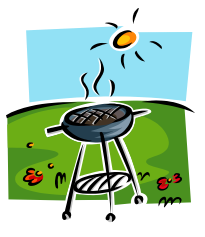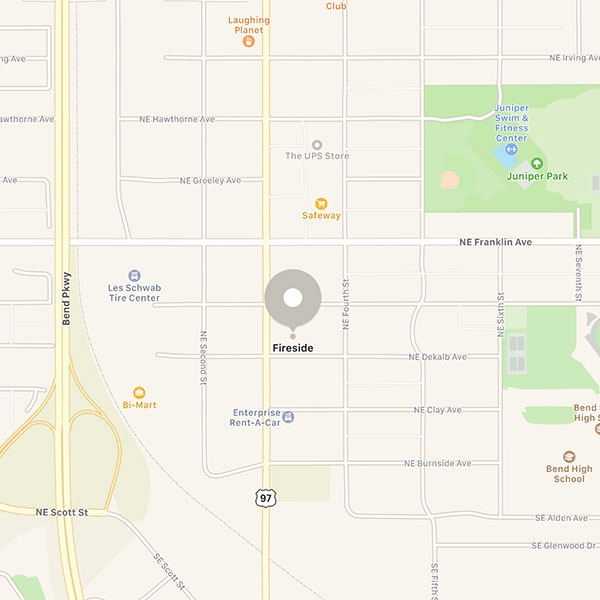Grilling Techniques to “Die” For
This is a “one stop shopping” list of simple, but very important grilling techniques that you will not find in one spot anywhere else. It’s not that you’ll die if you don’t know about the following grilling techniques, but you will enjoy your grill a lot more when you begin to use these grilling techniques. Grills, whether gas, charcoal, or pellet should be fun to use, easy to use and produce great tasting food every time they’re used. If this is not the case for you… read on!
Get It Hot First - A very common problem that leads to much frustration and bad results has a simple solution. Get the grill very hot first, then turn it down to the temperature that you need. This allows the grill to adjust to a stable operating temperature, to thoroughly sanitize the inside and to properly flavorize the food. When a grill is too cold, the food just seems to sit there too long so the temperature is turned up. During that process, foods like red meats are “greyed” (yuck) instead of flavorized. Sometimes when the starting temperature is too low, the heat is turned way up, the food starts to burn then the heat is turned down and the cycle continues. Not good. Also, remember that grilling does speed up as the food heats up, so you don’t have to keep the grill running at its maximum temperature.
Room Temperature - Allow the food to set at room temperature for 15 to 30 minutes before grilling, large, thicker selections of meat even longer. This results in the center of the food being cooked more quickly as the outside is seared and flavorized. Ice cold food however, stays raw in the middle and the outside can become burned before the inside is cooked.
Caramelize vs. Carbonize - Caramelizing is browning and produces the best flavor. Carbonizing blackens food and makes it bitter tasting. Which do you prefer? When you’re grilling, don’t just leave food on one side and try to cook it half way through. Watch it and turn it several times to reduce the carbonizing and increase the caramelizing. The higher the grilling temperature, the more that food should be turned. You will be amazed at how much better it tastes that way.
Thick Steaks - Of course you should bring thick steaks to room temperature before grilling and if you are not an expert short order chef, you should use a quick response meat thermometer to check temperature. Steaks should be grilled at a temperature that’s high enough to leave good sear marks after about 3 minutes on each side. After turning the steak enough to sear it nicely on both sides without carbonizing it, it’s probably still raw in the middle. A two inch thick tri-tip, or fillet may not even be warm in the middle. What to do? Simply turn the grill down to low, close the lid and convectively cook the thick steak for another 10 to 20 minutes. This will finish the thick steak or roast off so the center is pink, while the outside is not carbonized. If you don’t like pink, leave the steak longer on a low grill setting with the lid closed.
It’s the Moisture, Stupid - One of the biggest complaints about grilled food is that it’s too dry! Well, food, particularly chicken and turkey should not be over cooked. Over cooking dries food and makes it tuff. Unless you want to slow cook it for hours to break down the fibers, there’s another way to retain grilled food moisture. Ever see moisture bubbling out the top of a steak as you sear the other side. Guess what, you have just driven out a lot of moisture and the steak will be dry. Don’t do it! Turn the steak often enough that it sears, but does not lose its moisture. OK, you may have too many grill marks, but your food will be much more moist. And, with a little practice you can learn to have perfect grill marks and moist grilled food.
 The World’s Best Seasoning - The best grilled food has lots of sauce on it, right. Absolutely not! There is an akmost secret seasoning to use with vegetables, meat and fish that’s absolutely amazing. It’s a dry rub that’s very inexpensive. By the way, meats should be dry rubbed, put in a plastic bag and left for hours in the refrigerator to soften and allow the rub to penetrate into the meat. Vegetables should not be seasoned more than a few minutes before grilling however, as the salt will turn vegetables to mush if it is left too long.
The World’s Best Seasoning - The best grilled food has lots of sauce on it, right. Absolutely not! There is an akmost secret seasoning to use with vegetables, meat and fish that’s absolutely amazing. It’s a dry rub that’s very inexpensive. By the way, meats should be dry rubbed, put in a plastic bag and left for hours in the refrigerator to soften and allow the rub to penetrate into the meat. Vegetables should not be seasoned more than a few minutes before grilling however, as the salt will turn vegetables to mush if it is left too long.
Freshly ground pepper with salt, or seasoned salt is the secret. You’ll find that freshly ground pepper and salt bring out the natural grilled food flavor without covering that grilled food flavor up. There are now hundreds of marinades and sauces for grilling, but none bring out the grilled flavor like freshly ground pepper and salt do!
The recipe for problems - So, guests are coming for dinner and you want to impress them with your latest grilling skills. This is a simple, but usually ignored recommendation. Don’t practice on guests unless you have first practiced grilling the food for your own enjoyment. When you try something new with guests it’s almost guaranteed that you will have first time problems because your attention will be somewhere else and you may have had a glass of wine. Inattention and a glass or two of wine is a recipe for problems unless you have practiced the meal a time or two. Your last minute emergency grill activities and burning the food may be entertaining to your guests, but it’s unlikely that it’s what you hoped for.
Oil It Up - Be sure to add a small amount of cooking oil to both sides of the food you will be grilling, whether its fruit, vegetables, meat, or fish. You notice that I said small amount. Light oil helps retain flavor and reduces sticking. Also, be sure to remove any pieces of surface fat. Any excess oil, or fat will cause a grease fire that will make your meal taste bitter. Also, remove all skin from chicken and other fowl, as the extremely fatty skin will cause a grease fire. Fatty food should be grilled at reduced temperatures to eliminate grease fires. If you want to eat that fatty chicken skin, you need to use a rotisserie with indirect, or IR heat and catch the grease in a basting pan set below the fowl. Also, lightly oil your grill’s grids after each time that you wire brush them.
Know All the Variables - Each time that you use your grill, you need to think about and adjust for all the variables that will affect the taste and doneness of your grilled food. I’ve mentioned many of them above, but here’s a more complete list. Stabilized grill temperature, food temperature, food thickness, outside air temperature, kind of food, hood open, or closed, and fat content.
 Relax - The biggest grilling secret of all is to relax. The keys to relaxing are to properly pre-heat the grill, adjust for the variables listed above and then begin grilling at a stable temperature. Remember grilled food cooks at an increasing rate as it heats up, so even if it doesn’t appear to be grilling quite fast enough, relax and give it a little more time.
Relax - The biggest grilling secret of all is to relax. The keys to relaxing are to properly pre-heat the grill, adjust for the variables listed above and then begin grilling at a stable temperature. Remember grilled food cooks at an increasing rate as it heats up, so even if it doesn’t appear to be grilling quite fast enough, relax and give it a little more time.
[feather_share]


